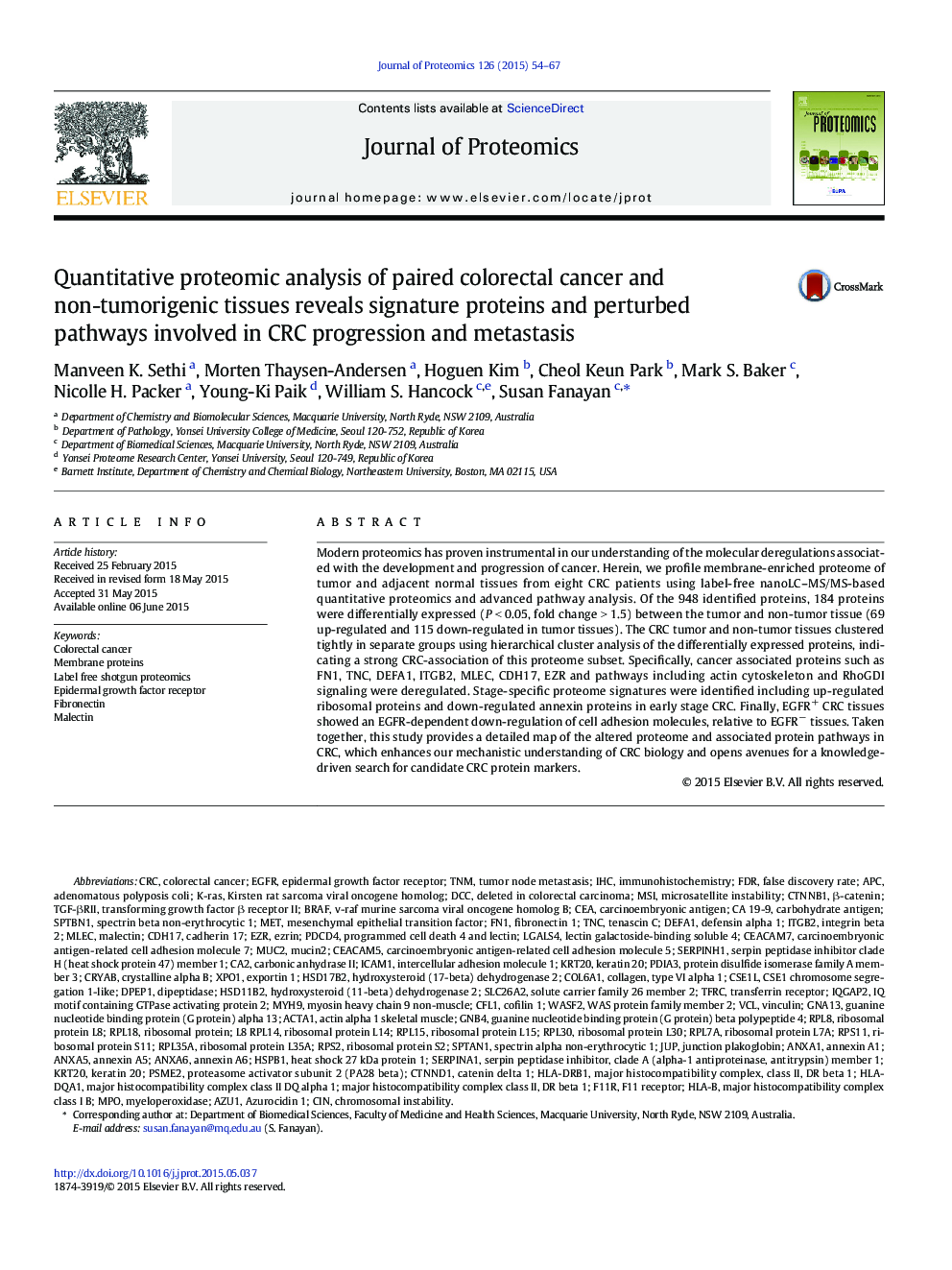| کد مقاله | کد نشریه | سال انتشار | مقاله انگلیسی | نسخه تمام متن |
|---|---|---|---|---|
| 1225505 | 1494754 | 2015 | 14 صفحه PDF | دانلود رایگان |

• Tight and separate clustering of tumor and normal tissues by hierarchical clustering of differentially expressed proteins
• Several deregulated cancer associated proteins identified, including FN1, EZR, TNC, DEFA1, MLEC, CDH17
• Several deregulated cancer associated pathways identified, including actin cytoskeleton and RhoGDI signaling
• Tumor stage-specific proteome signatures discovered
• EGFR-dependent down-regulation of cell adhesion molecules in EGFR+ CRC tissues
Modern proteomics has proven instrumental in our understanding of the molecular deregulations associated with the development and progression of cancer. Herein, we profile membrane-enriched proteome of tumor and adjacent normal tissues from eight CRC patients using label-free nanoLC–MS/MS-based quantitative proteomics and advanced pathway analysis. Of the 948 identified proteins, 184 proteins were differentially expressed (P < 0.05, fold change > 1.5) between the tumor and non-tumor tissue (69 up-regulated and 115 down-regulated in tumor tissues). The CRC tumor and non-tumor tissues clustered tightly in separate groups using hierarchical cluster analysis of the differentially expressed proteins, indicating a strong CRC-association of this proteome subset. Specifically, cancer associated proteins such as FN1, TNC, DEFA1, ITGB2, MLEC, CDH17, EZR and pathways including actin cytoskeleton and RhoGDI signaling were deregulated. Stage-specific proteome signatures were identified including up-regulated ribosomal proteins and down-regulated annexin proteins in early stage CRC. Finally, EGFR+ CRC tissues showed an EGFR-dependent down-regulation of cell adhesion molecules, relative to EGFR− tissues. Taken together, this study provides a detailed map of the altered proteome and associated protein pathways in CRC, which enhances our mechanistic understanding of CRC biology and opens avenues for a knowledge-driven search for candidate CRC protein markers.
Figure optionsDownload high-quality image (87 K)Download as PowerPoint slide
Journal: Journal of Proteomics - Volume 126, 3 August 2015, Pages 54–67